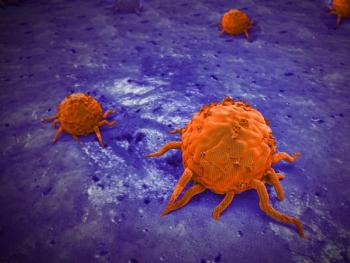
Courtney DiNardo, MD, on Combination Regimens Findings in IDH1-Positive AML
The MD Anderson Cancer Center expert spoke about the efficacy of ivosenidib plus venetoclax, with or without azacytidine, in patients with IDH1-mutated acute myeloid leukemia.
Ivosenidib (Tibsovo) plus venetoclax (Venclexta) with or without azacytidine (Vidaza) appeared to be effective in treating patients with IDH1-mutated acute myeloid leukemia (AML), according to a phase Ib/II trial presented at the 2020 ASCO Virtual Scientific Program.
In an interview with CancerNetwork, senior study author Courtney DiNardo, MD, associate professor of leukemia at The University of Texas MD Anderson Cancer Center, discussed findings from the study.
Transcription:
The first is that there really is a drug-drug interaction. So it just kind of raises that important point that when you have different approved therapies, it's important not to just assume you can put them all together and it'll be the same doses. And so, the first part of my presentation will be going through the way that venetoclax is metabolized in the setting with ivosenidib and how you need to be aware of that. So that's kind of the first important point.
The next point is that it really is a well-tolerated regimen. We know the anticipated side effects of azacytidine with venetoclax, which is some degree of myelosuppression and febrile neutropenia and the risk of IDH inhibitors, which is differentiation syndrome. And so we saw some of the same safety signals but nothing new or increased intensity than we would otherwise have expected to see. So overall safety was kind of expected for a relapsed AML population, which is the majority of who we enrolled.
In terms of kind of the efficacy end points, there's some questions out there in the literature and preclinical data that suggests that you actually shouldn't put these drugs together, that they may actually antagonize themselves. And so, one of the first things we wanted to do was make sure that we were seeing efficacy, hopefully what we would see with the agents alone. The goal is to see even better responses, and thankfully, so far we are. The composite CR rate in our 20 evaluable patients so far is about 80%, which is pretty dramatic in a population that's primarily relapsed/refractory secondary AML itself. And of those responding patients, half of them become MRD-negative by flow cytometry. So a nice validated endpoint of a deep remission. And the median follow-up is relatively short in this study, only about 7 or 8 months. And the median overall survival hasn't been met, thankfully. All underlying disease types have responded. The particular population that I mentioned that were MRD-negative, the remission rate, those patients all continue on study, very durable responses and no progressions or relapses so far.
So overall, I guess the take home point is that it's a small study so far and the follow-up time is still short, but it is pretty exciting preliminary data.
Newsletter
Stay up to date on recent advances in the multidisciplinary approach to cancer.


















































































